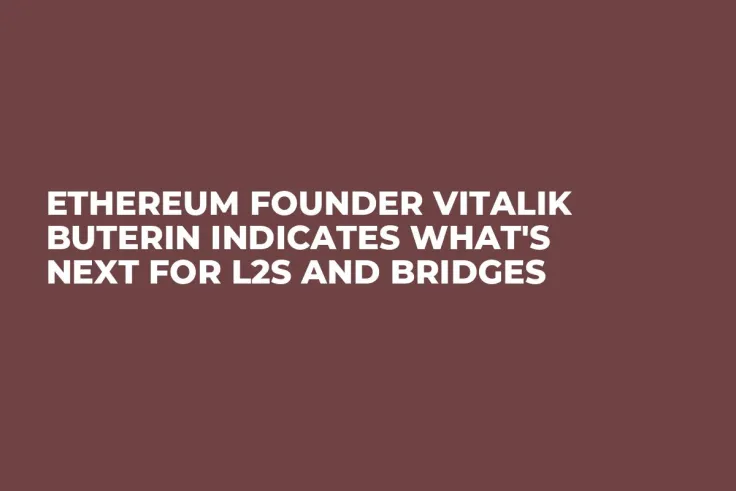
The Ethereum (ETH) founder attempted to make a simplified classification of Layer-2 solutions on the top of Ethereum (ETH) and proposed two elegant designs to make L1/L2 bridging more secure and resource-optimized.
From reading bridges to validation bridges: Vitalik Buterin on L1/L2 consistency
In 2023, there are three types of L2 solutions dominating the EVM ecosystem: rollups, validiums and disconnected system. While rollups store the data on L1, validiums use servers or other isolated systems for these purposes. Rollups verify the data via fraud-proof or zk-SNARKs, while validiums only support zk-SNARKS.
This scheme was described by Vitalk Buterin in his latest blog post published today, Oct. 31, 2023.
Two factors are dominant, he says, when it comes to choosing this or that L2 design to build on. First, it is the cost of native Ethereum (ETH) data availability and then the application's own needs, i.e., its interest in higher speed or more enhanced security.
Then, if the Ethereum (ETH) mainnet somehow reverts (unexpectedly splits into two independent versions), the L2 network can only read finalized blocks or revert as well: here are the two main models needed to keep the L1/L2 system consistent.
Another productive concept in this segment is the so-called validating bridge, i.e., a cross-blockchain mechanism that can prove the validity of its "underlying" blockchain:
"Now, let's make the bridge a validating bridge: it checks not just consensus, but also a ZK-SNARK proving that the state of any new block was computed correctly."
Once this is done, the top chain's validators can no longer steal your funds. They can publish a block with unavailable data, preventing everyone from withdrawing, but they cannot steal (except by trying to extract a ransom for users in exchange for revealing the data that allows them to withdraw).
However, the L1/L2 equilibrium is still vulnerable until some "form of governance gadget on Ethereum" is able to make the bridge contract on Ethereum (ETH) aware of a hypothetical hard fork taking place.
No "one-size-fits-all" solution for Ethereum L2s, here's why
All of these "add-ons" to Ethereum (ETH) L2s' security and operability come with their own costs. In terms of security, they can be described as the security of withdrawing to Ethereum or the security of reading Ethereum.
Every dApp needs to find the perfect solution with its own requirements in mind. For some applications, high security and tight connectedness are of paramount importance. For their competitors, something looser is acceptable in exchange for more advanced scaling opportunities.
However, for some systems, improving "connectedness" in the coming years, step by step, might be a perfect solution, Buterin concludes.

 Dan Burgin
Dan Burgin Vladislav Sopov
Vladislav Sopov U.Today Editorial Team
U.Today Editorial Team